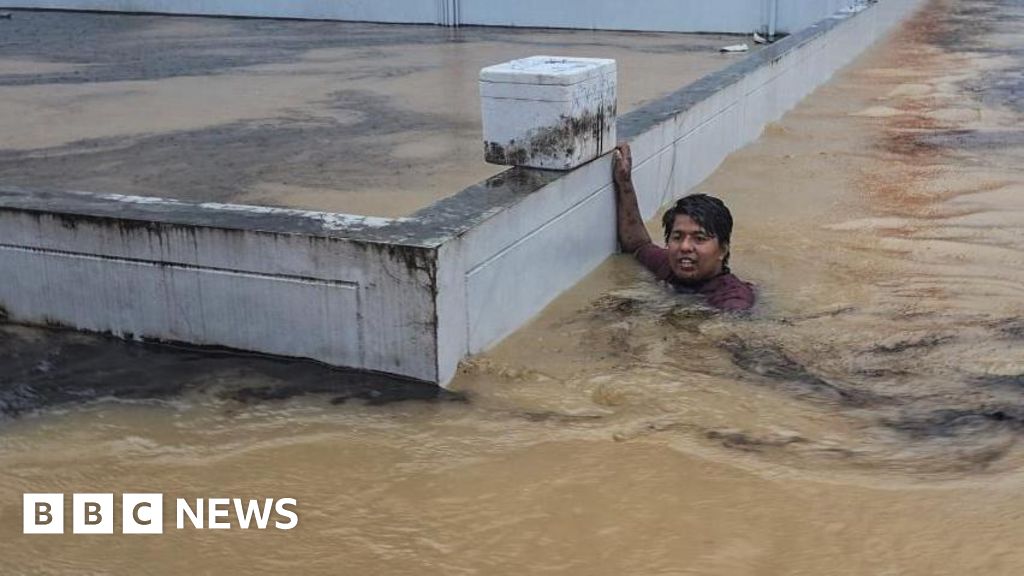
Parts of Thailand are in crisis as record-breaking floods have claimed at least 18 lives and forced authorities to deploy military resources in a desperate bid to manage relief efforts. Over the past week, ten provinces in the country’s south have been inundated, with Hat Yai, a crucial business hub near the Malaysian border, experiencing its heaviest rainfall in three centuries—335mm in just one day.
The announcement comes as images circulate showing vehicles and homes submerged, while residents anxiously await rescue from rooftops. The relentless rains have not only affected Thailand but have also wreaked havoc in neighboring countries. In Vietnam, the death toll has climbed to 91 in a week, and in Malaysia, over 19,000 residents have been evacuated from their homes.
Thailand’s Struggle Against Nature
More than 2 million people in Thailand have been impacted by the floods, yet only 13,000 have found refuge in shelters. The vast majority remain isolated, unable to access aid, according to Reuters. The Thai military, tasked with leading the crisis response, is preparing to dispatch an aircraft carrier and a fleet of 14 boats loaded with relief supplies. These vessels are equipped with field kitchens capable of delivering 3,000 meals daily, and the aircraft carrier is ready to serve as a “floating hospital” if necessary.
Meanwhile, the governor of Songkhla province, where Hat Yai is located, has confirmed the deployment of boats, high-clearance trucks, and jet skis to facilitate evacuations. The Thai cabinet has declared Songkhla a disaster zone, unlocking funds for urgent relief efforts. However, many residents remain stranded as waters continue to rise.
Desperate Calls for Help
Volunteer rescue groups, such as the Matchima Rescue Center, have been overwhelmed with thousands of evacuation requests in recent days. Social media platforms, like Facebook, have become a lifeline for those trapped, with users posting urgent pleas for assistance. One user wrote,
“Many people are trapped… Please help. It’s very difficult right now. The water has reached the second floor, where there are children, the elderly, the sick, and the disabled!!!”
Another user shared their dire situation, stating their household had been waiting for help for three days, with a phone battery dwindling to 40%. Some have reported shortages of food and water, exacerbating the crisis. A viral video clip shows three young boys clinging to power lines, attempting to reach safety as murky floodwaters rise beneath them.
Regional Impact: Malaysia and Vietnam
In Malaysia, more than 19,000 people have been relocated to safety, with 126 evacuation centers established in northern border areas. Rescue teams in Kelantan and Perlis have been navigating knee-deep floodwaters to assist residents cut off by rising waters. The Malaysian government has mobilized resources to ensure the safety and well-being of its citizens during this natural disaster.
Vietnam, too, is grappling with the aftermath of severe flooding. The death toll has reached 91, highlighting the widespread devastation across the region. The relentless weather patterns underscore the urgent need for coordinated regional efforts to address the impacts of climate change and improve disaster preparedness.
Long-Term Implications and Future Preparedness
The current flooding in Southeast Asia serves as a stark reminder of the region’s vulnerability to extreme weather events. Experts warn that climate change may increase the frequency and intensity of such disasters, necessitating robust infrastructure and emergency response systems. The Thai military’s deployment of an aircraft carrier as a potential “floating hospital” illustrates innovative approaches to disaster management that could be adopted more widely.
Looking ahead, governments across Southeast Asia must prioritize investment in flood defenses and community education programs to enhance resilience. Collaborative efforts to share resources and expertise will be crucial in mitigating the impact of future natural disasters.
As the waters slowly recede, the focus will shift to recovery and rebuilding. The affected communities face a long road to restoration, with the immediate need for humanitarian aid and long-term strategies to prevent future tragedies.





